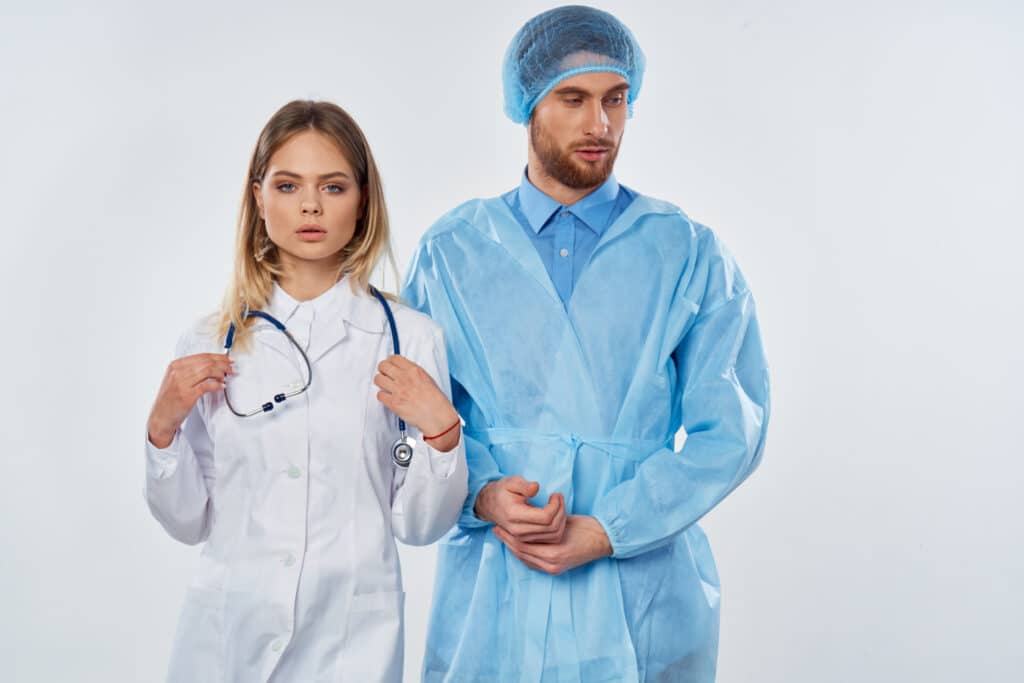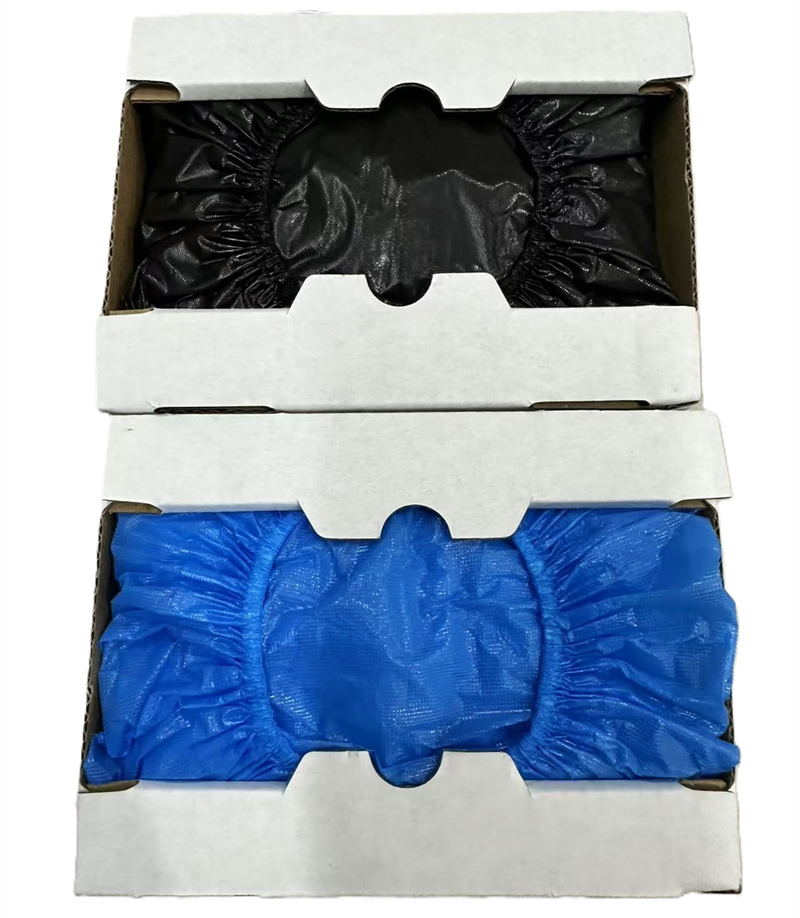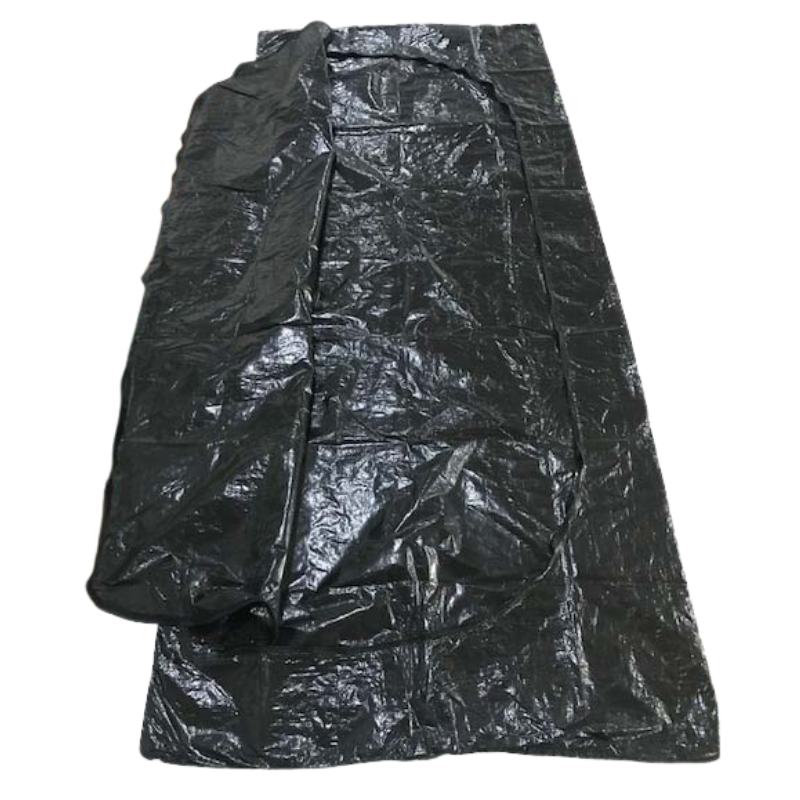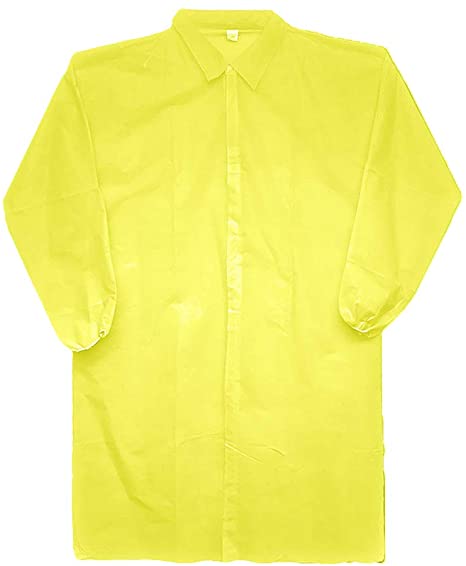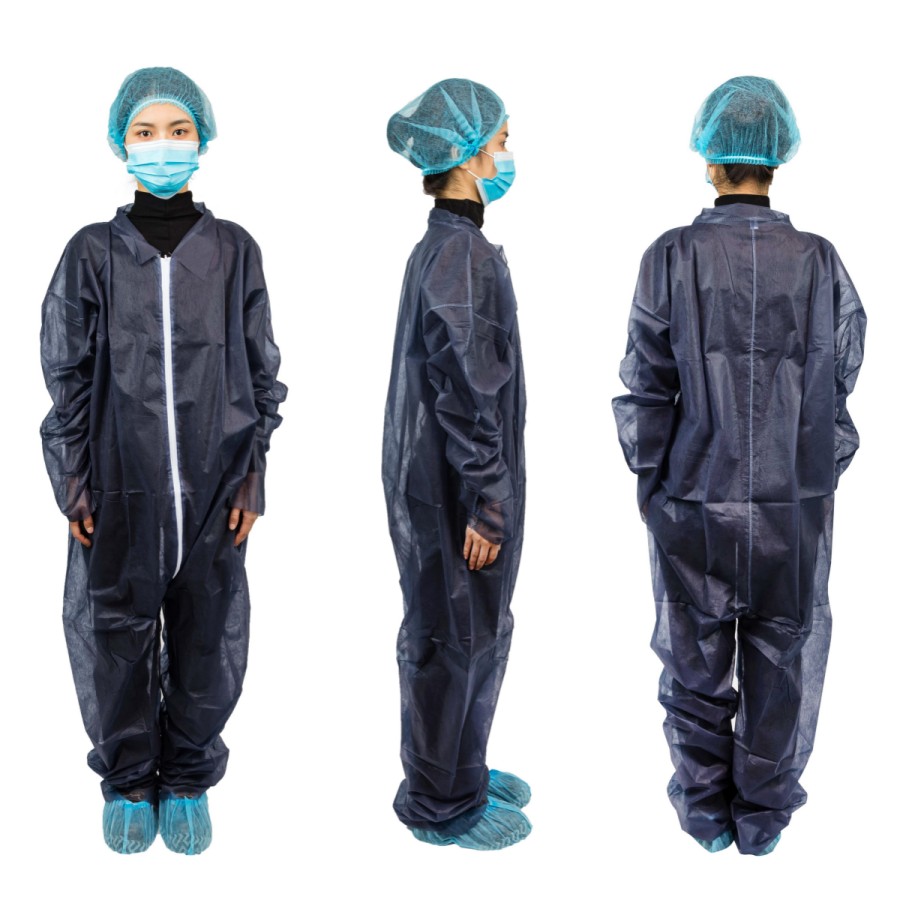Every lab environment requires a uniform. A uniform that screams safety first and denotes professionalism. Among these uniforms, one piece stands out – the lab coat.
A lab coat is more than just a white garment that healthcare professionals, scientists, and students wear. It’s an essential piece of personal protective equipment (PPE) that serves many purposes, from preventing exposure to hazardous materials and chemicals to protecting personal clothing.
Let’s dive deep into the mysterious world of laboratory coats, focusing on their different types and materials, how to wear lab coats, and lab coat supply.
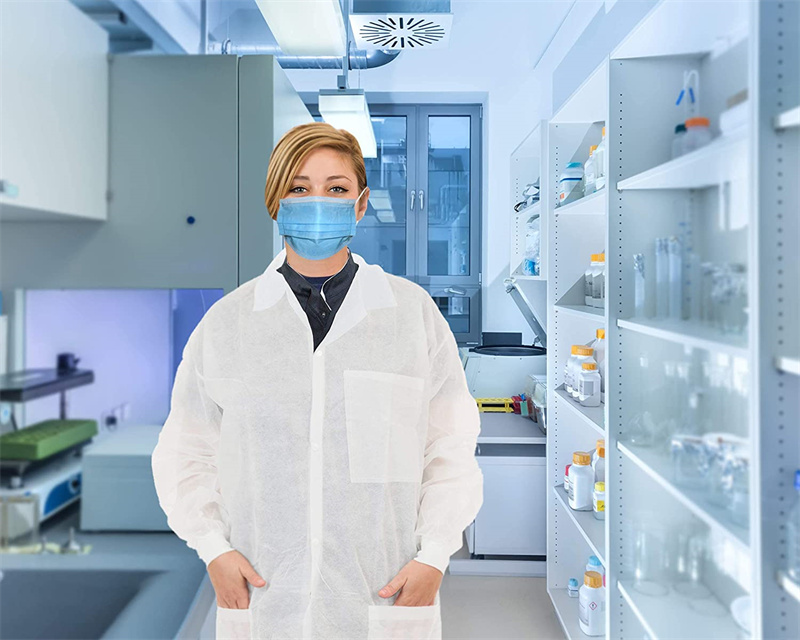
Defining Laboratory Coats
A laboratpry coat is an essential piece of personal protective equipment (PPE). It’s a protective garment worn in various environments, including laboratories, hospitals, and other settings, to protect the wearer’s skin and clothes from hazardous substances.
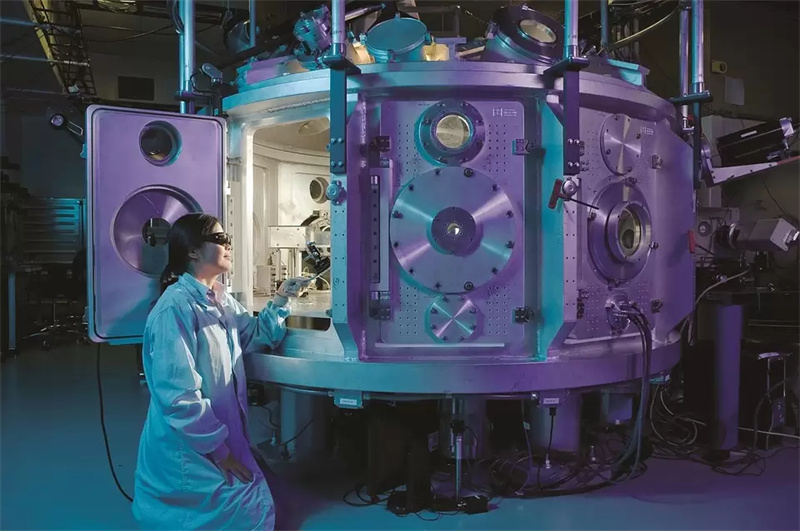
The Importance of Lab Coats
Laboratory coats, a staple in scientific and medical environments, serve more purposes than just helping identify personnel. They play a critical role in maintaining safety and hygiene, and their importance cannot be overstressed. Let’s delve deeper into why lab coats are essential:
1. Protection from Chemical Spills and Splashes
One of the primary functions of a lab coat is to protect the wearer from spills and splashes of hazardous chemicals or substances. Some chemical protection suits are even designed to resist chemicals, thereby providing an extra layer of protection.
2. Barrier against Infectious Materials
In medical and biological labs, lab coats can prevent potentially harmful biological materials from coming into direct contact with the wearer’s skin or clothing. They also protect against the spread of these substances outside the lab.
3. Flame Resistance
Certain types of lab coats are made of flame-resistant materials. These are particularly useful in environments where individuals work with open flames or flammable substances.
4. Identification
In large labs or hospitals, it’s essential to quickly identify personnel. Lab coats can denote department, position, or even the type of work a person is performing, based on color or style.
5. Protection of Personal Clothing
Lab coats prevent personal clothing from becoming dirty or damaged during work. They can be removed before leaving the lab, keeping your everyday attire clean and free from potential contaminants.
6. Professionalism
Donning a lab coat signifies professionalism and can mentally prepare wearers for their work ahead. The lab coat serves as a psychological symbol, instilling a sense of responsibility and focus.
7. Maintaining Sterile Environments
In sterile environments, like certain areas of hospitals or microbiological labs, lab coats help maintain sterility, preventing stray hairs, skin cells, or fibers from personal clothing from contaminating the environment.
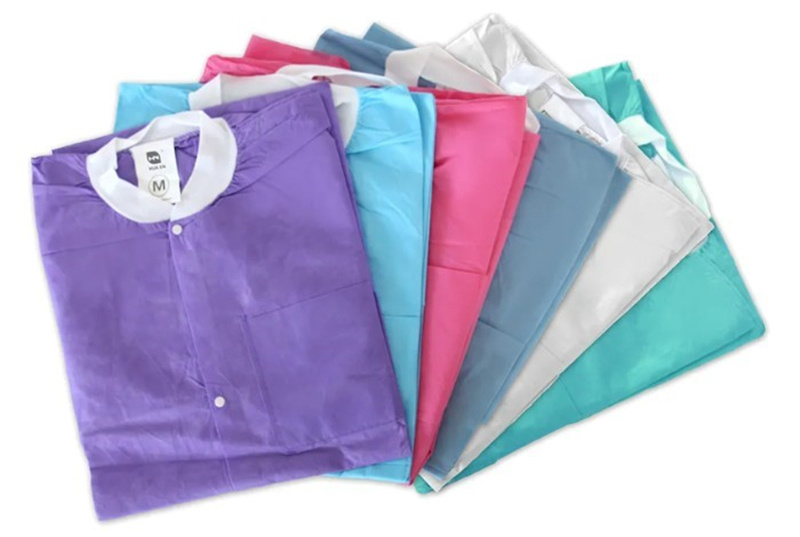
Different Types of Lab Coats
Various types of lab coats cater to different needs and applications:
- General Lab Coats: general reusable lab coats are used in a variety of lab settings. They’re often made of polyester or a polyester-cotton blend, providing comfort and minimal body protection.
- Chemical Resistant Lab Coats: These lab coats are designed to protect against spills and splashes of chemicals. They’re generally made of materials like treated cotton that can resist penetration from certain chemicals and significant chemical handling.
- Flame Resistant Lab Coats(FR Lab Coats): When working with open flames(not a chemical fire
) or extremely flammable chemicals presents, a flame-resistant (FR) lab coat is a must. These fire resistant coats are made of a specially designed material that can withstand heat and resist catching fire. - Supplement Lab Coat: Some lab coats are designed to supplement the protection offered by another piece of PPE. They’re used in environments where additional protective clothing is necessary.
- Disposable Lab Coats: These are meant for single-use and are ideal in environments where laundry isn’t feasible, or the risk of contamination is high. With different materails and production technology, disposable lab coats also can be used as Chemical Resistant Lab Coats, Flame Resistant Lab Coats.
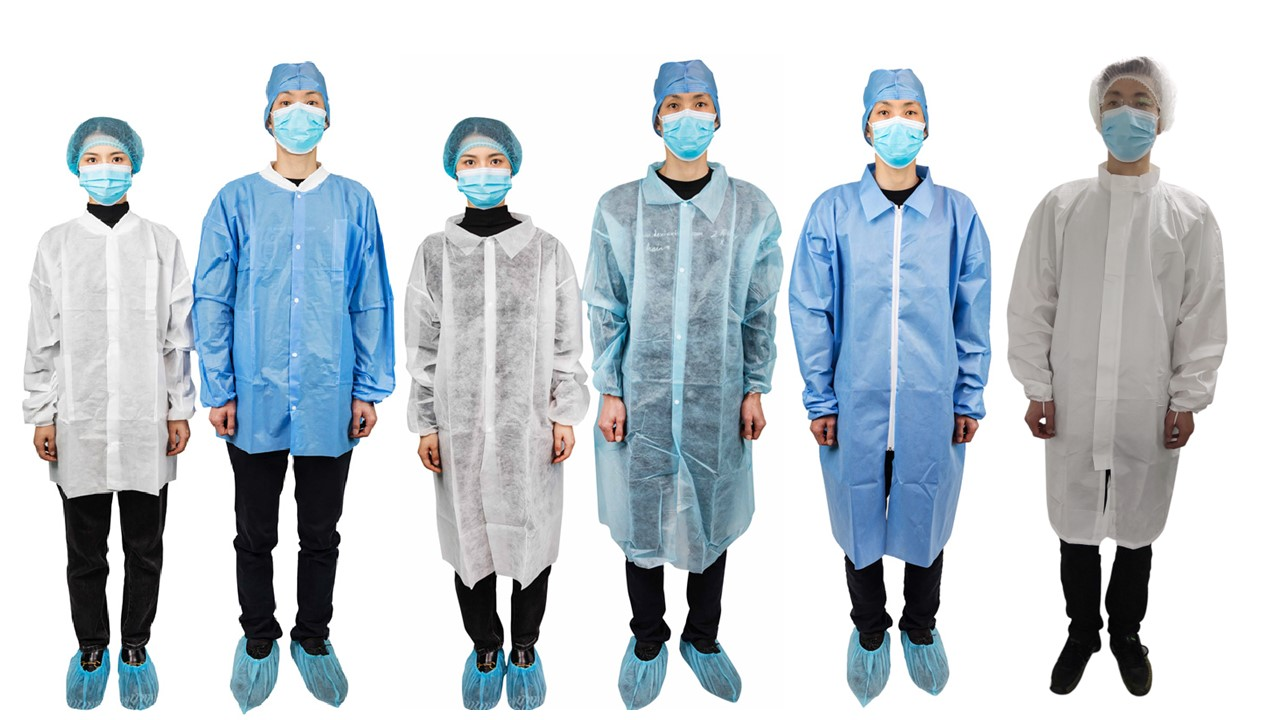
Materials Used in Disposable Lab Coats
Disposable lab coats are made from various materials, each offering different levels of protection:
PP (Polypropylene): Lightweight and breathable, PP is ideal for protection against non-hazardous substances. It also can be flame resistant material with special dealing.
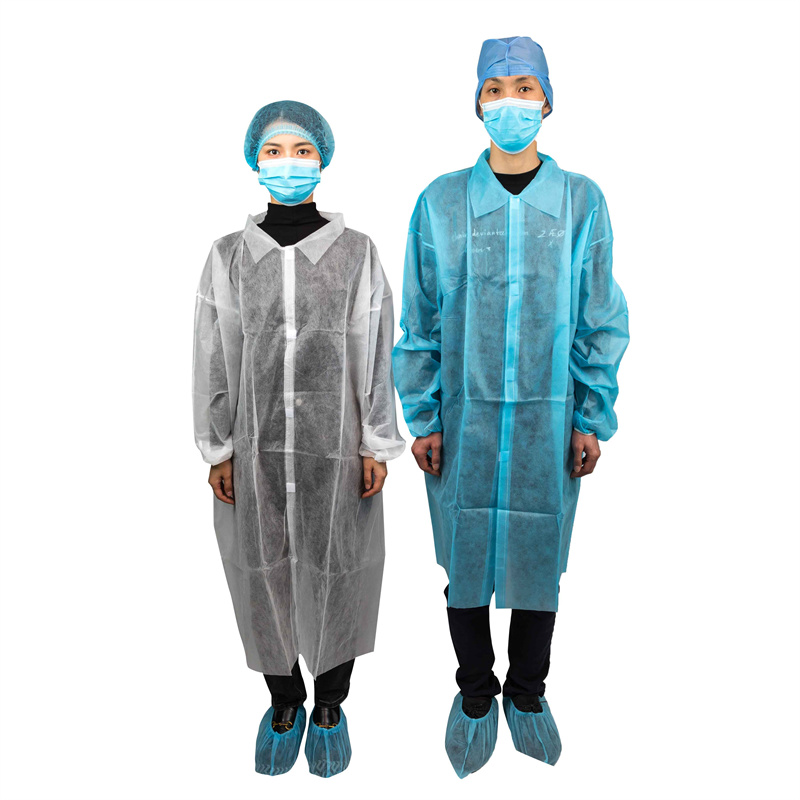
SMS (Spunbond Meltblown Spunbond): This fabric offers higher resistance to liquids and aerosols.
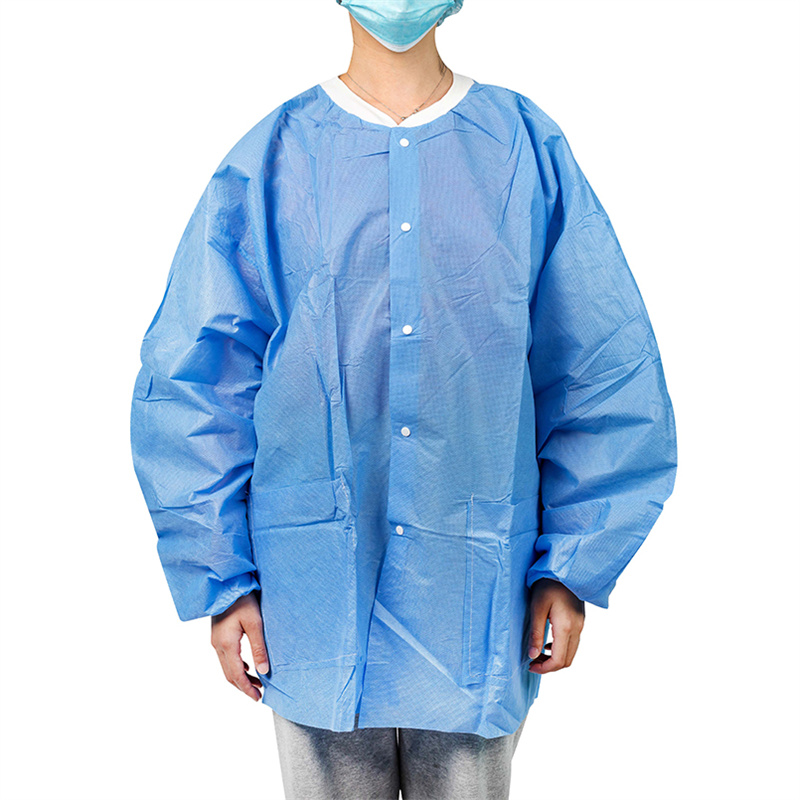
Microporous: Microporous laboratory coat provides excellent protection against blood, body fluids, and other potentially infectious materials.
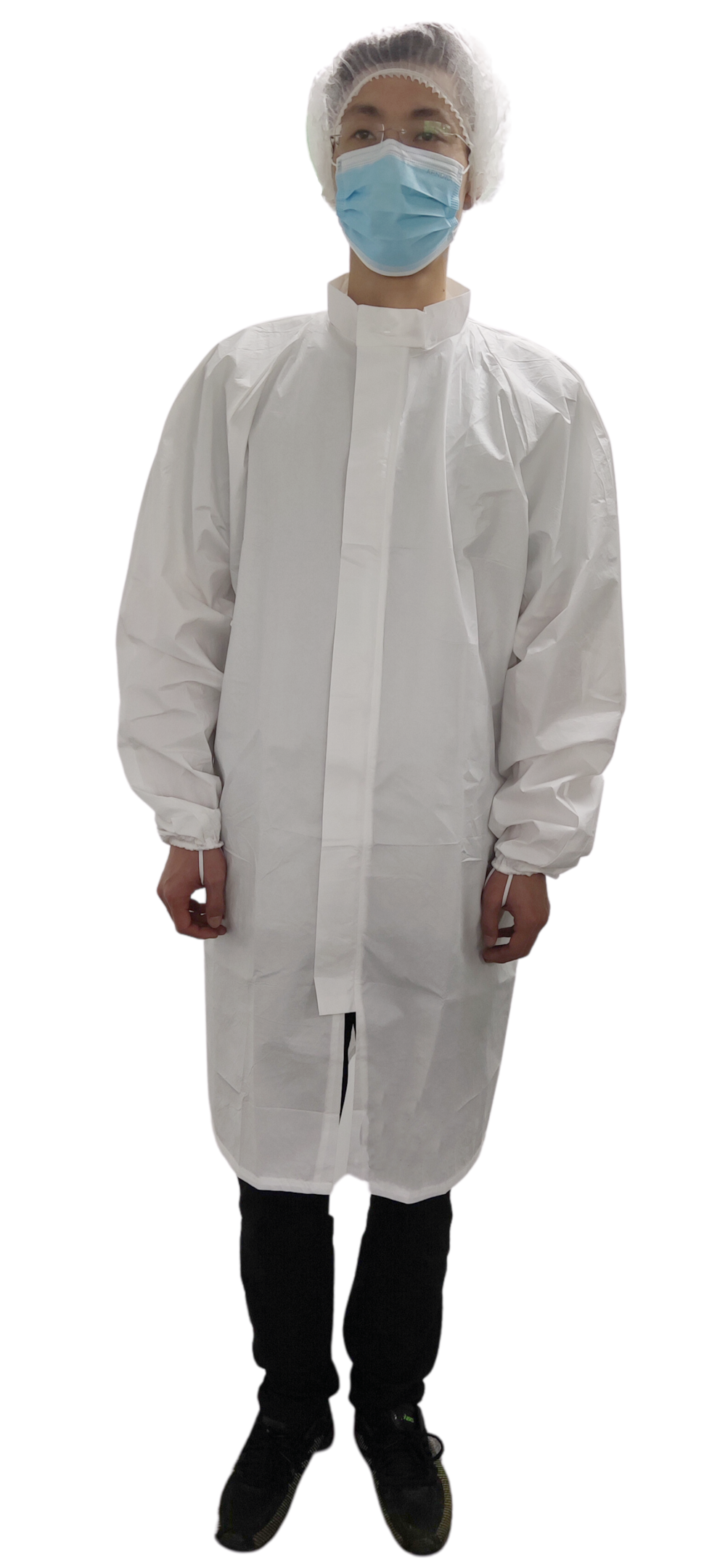
PP+PE (Polypropylene + Polyethylene): This combination provides robust and durable protection against various liquids.
PE (Polyethylene): PE is used in lab coats designed to resist wet bacterial penetration.
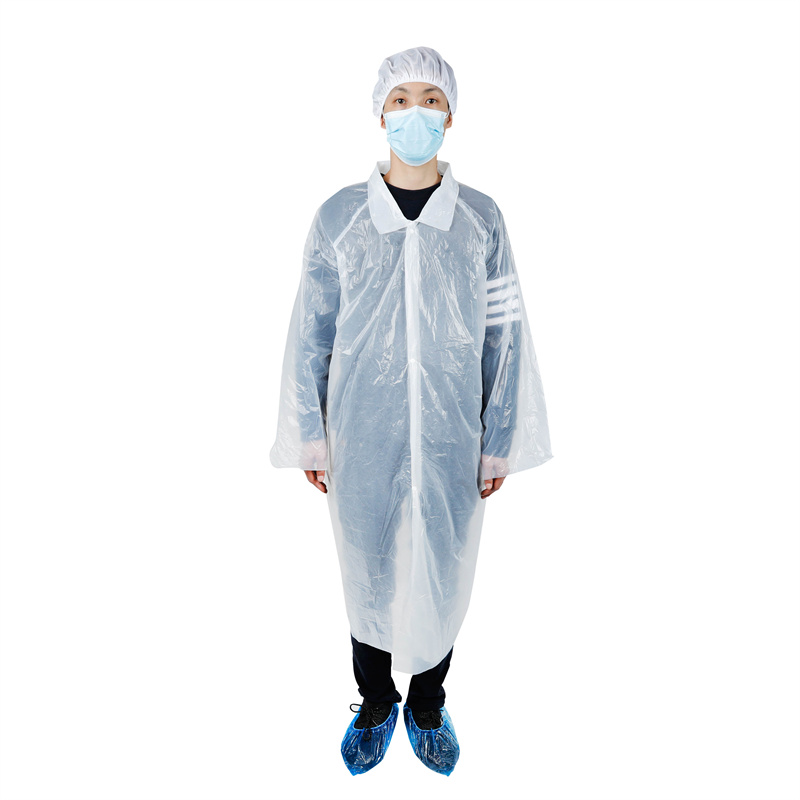
Applications of Disposable Lab Coats
Disposable lab coats find their use in a variety of settings, including medical, laboratory, industrial, and educational environments. Their ease of use and disposal make them a practical choice for many.
Choosing the Right Lab Coat
Choosing the right lab coat is an essential task that hinges on several important factors. Here are some guidelines to help you make an informed decision:
1. Understand Your Work Environment: The first step is to understand the nature of your work and the risks associated with it. If you work in a lab where chemical splashes are a possibility, you should opt for a chemical-resistant lab coat. If your work involves fire hazards or flammable materials, a flame-resistant lab coat is needed. For clinical environments where sterility is a priority, antimicrobial lab coats are the best choice.
2. Materials: The lab coat materials are directly linked to the type of protection it offers. Cotton or cotton/polyester blends are comfortable and sufficient for general use. For chemical resistance, you may require a lab coat made of treated cotton or a specialized material. In environments where disposability and light protection are needed, coats made from materials like polypropylene or polyethylene are ideal.
3. Fit and Comfort: A lab coat should be comfortable to wear for long periods. It should be the right size, not too loose that it becomes a hazard or too tight that it restricts your movement. Most manufacturers offer unisex lab coats in a range of sizes.
4. Sleeve Length: Lab coat sleeves should be long enough to protect your arms but not so long that they interfere with your work. The sleeve length should be just right to cover your wrist when your arm is extended.
5. Closure Type: The type of closure on your lab coat (snaps, buttons, zippers, etc.) can also be an important factor, especially in a situation where quick donning or doffing is required.
6. Cost: While you shouldn’t compromise on safety, cost is an important factor to consider. Disposable lab coats are usually cheaper but can add up over time. Reusable lab coats may be more expensive initially but could save money in the long run if maintained properly.
7. Regulations and Standards: Ensure the lab coat you choose meets any applicable regulations or standards in your industry or country. These could pertain to fire safety, chemical resistance, electrical resistance, etc.
8. Manufacturer Reputation: Opt for lab coats from reputable manufacturers who are known for their quality. Customer reviews and ratings can provide valuable insights into the product quality and the manufacturer’s customer service. Wuhan Youfu is renowned manufacturer for supplying high-quality lab coats catering to various needs and they provide professional customer service.
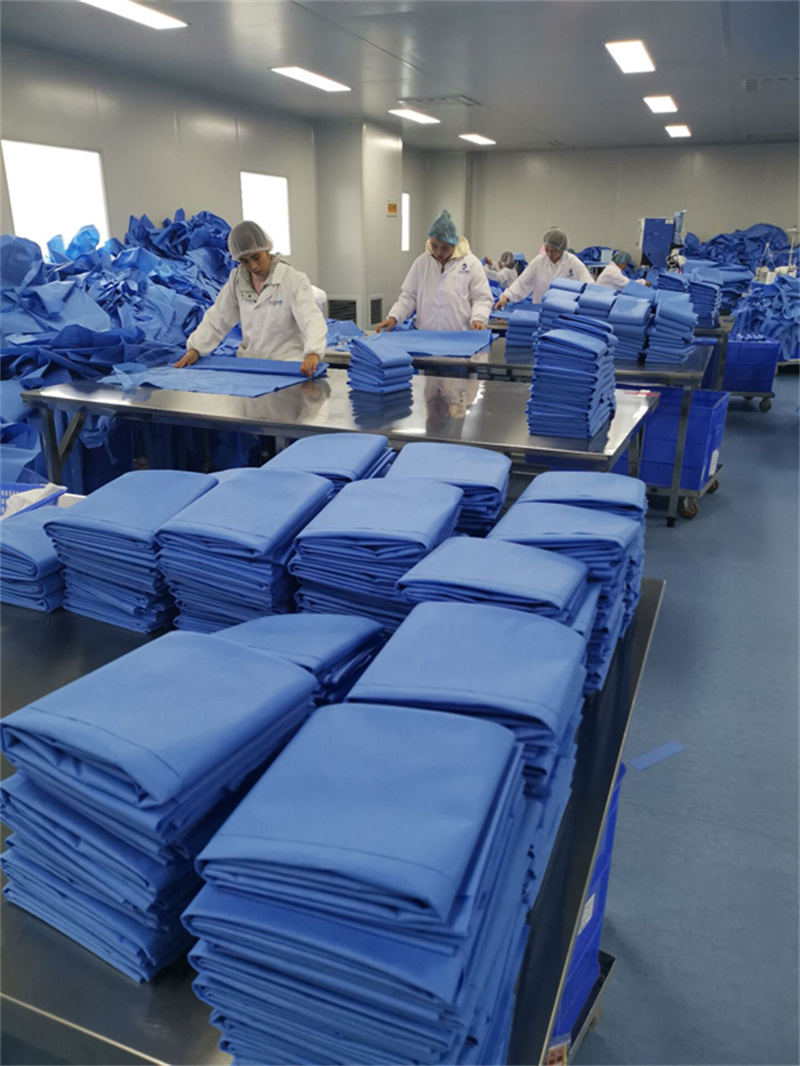
Proper Use and Disposal of Disposable Lab Coats
1. Correct Usage
Selecting the right size and style is crucial. The lab coat should cover your torso and most of your legs and arms. If you are in a high-risk environment, you may need a fully encapsulating suit that covers your whole body.
2. Safe Removal
When removing your lab coat, do so slowly and carefully to avoid any contaminants from touching your skin or personal clothing.
Start by unfastening the lab coat and peeling it off from your shoulders, touching only the inside of the lab coat. Roll it inside out as you remove it to contain potential contaminants.
3. Proper Disposal
After removing, the lab coat should be disposed of immediately in a designated waste container. These containers should be clearly marked and puncture-resistant if the lab coat is potentially contaminated with sharp objects.
If the disposable lab coat is contaminated with any hazardous substances, it must be disposed of according to the regulations in your local area for hazardous waste.
4. General Precautions
While disposable lab coats provide an excellent barrier against many substances, they may not provide sufficient protection against all types of hazards. Therefore, it is essential to identify potential risks in your specific working environment and choose your personal protective equipment (PPE) accordingly.
Where to Buy Lab Coats: Introducing Wuhan Youfu
If you’re looking to buy lab coat, particularly disposable ones, Wuhan Youfu is worth checking out. Wuhan Youfu is renowned for supplying high-quality lab coats catering to various needs.
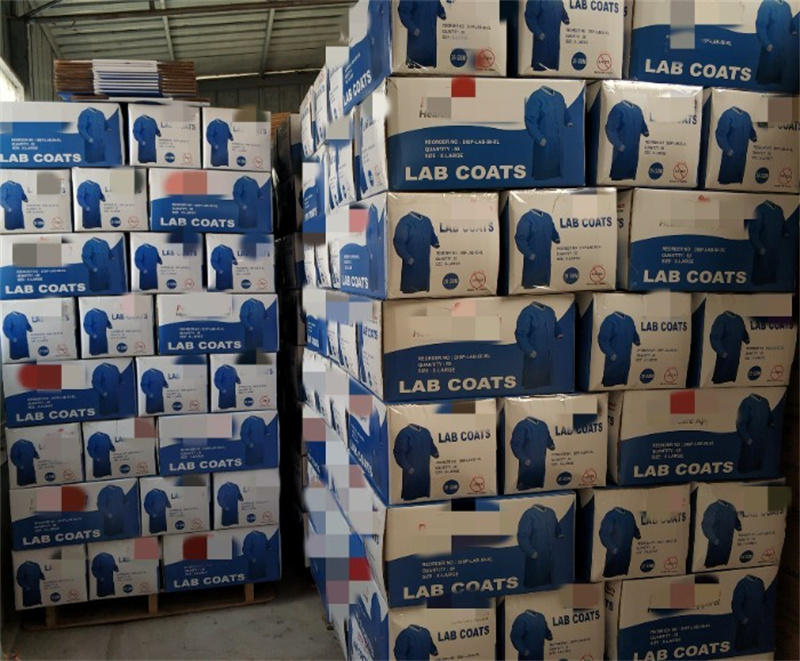
Conclusion
Whether it’s a general lab coat, a flame-resistant lab coat, or a disposable lab coat, each has its unique role in ensuring safety in different work settings. Disposable lab coats, in particular, offer a convenient solution for many scenarios, providing easy-to-use and easy-to-dispose options.
FAQs
- Q: Can a flame-resistant lab coat protect against a chemical fire?
- A: Flame-resistant lab coats can protect against brief exposure to flames but are not designed for protection in a full-blown chemical fire.
- Q: Is it safe to wear the same lab coat for all lab tasks?
- A: No, the right lab coat should be chosen based on the task and the hazards involved.
- Q: Why are most lab coats white?
- A: The color white is chosen because white lab coats make it easier to spot any contaminants on the coat.
- Q: Can disposable lab coats be reused?
- A: Disposable lab coats are designed for single-use and should be discarded after use to prevent cross-contamination.
- Q: What’s the difference between a lab coat and a chemical protection suit?
- A: A chemical protection suit offers more comprehensive protection and is used in more hazardous environments

